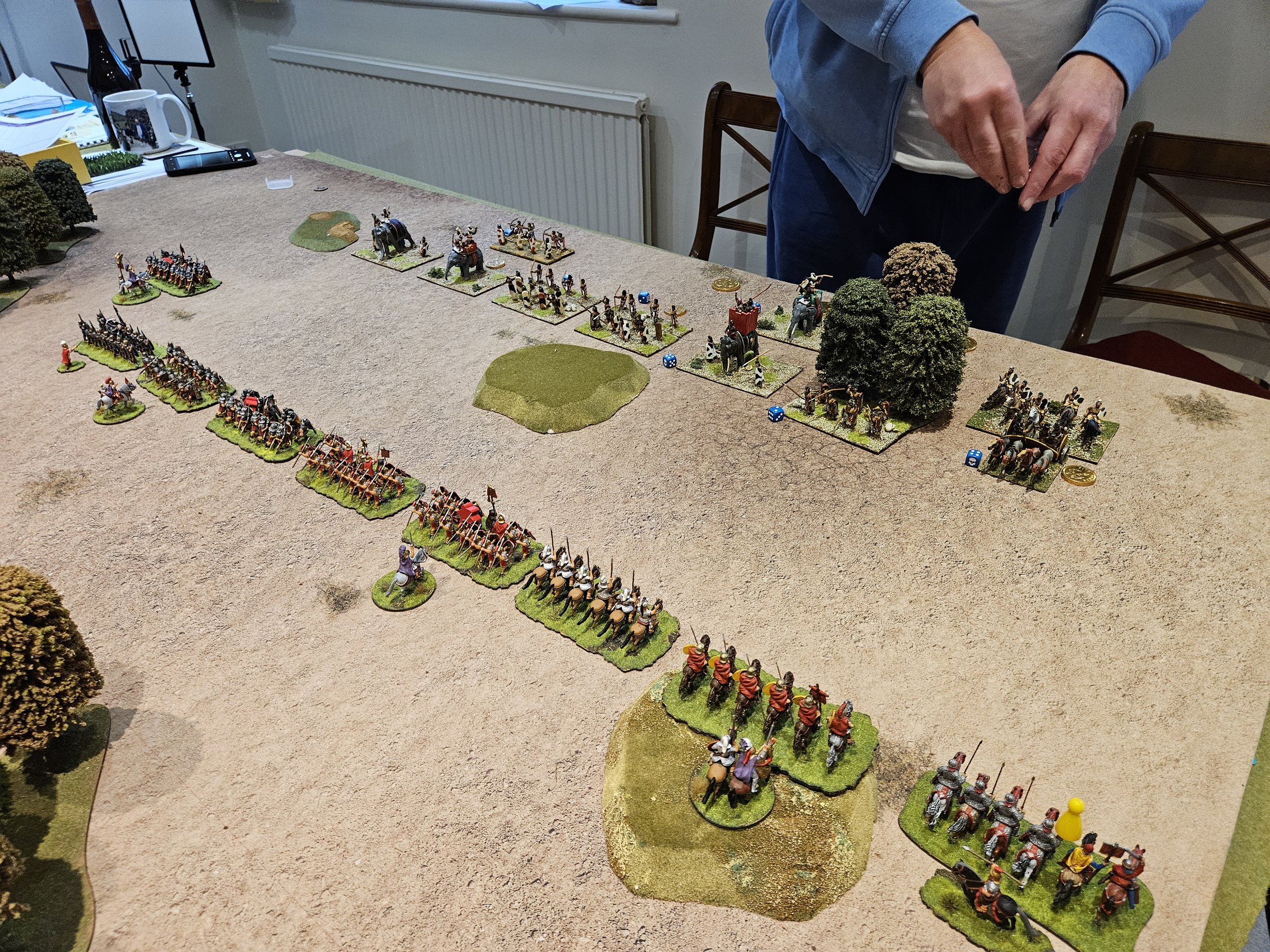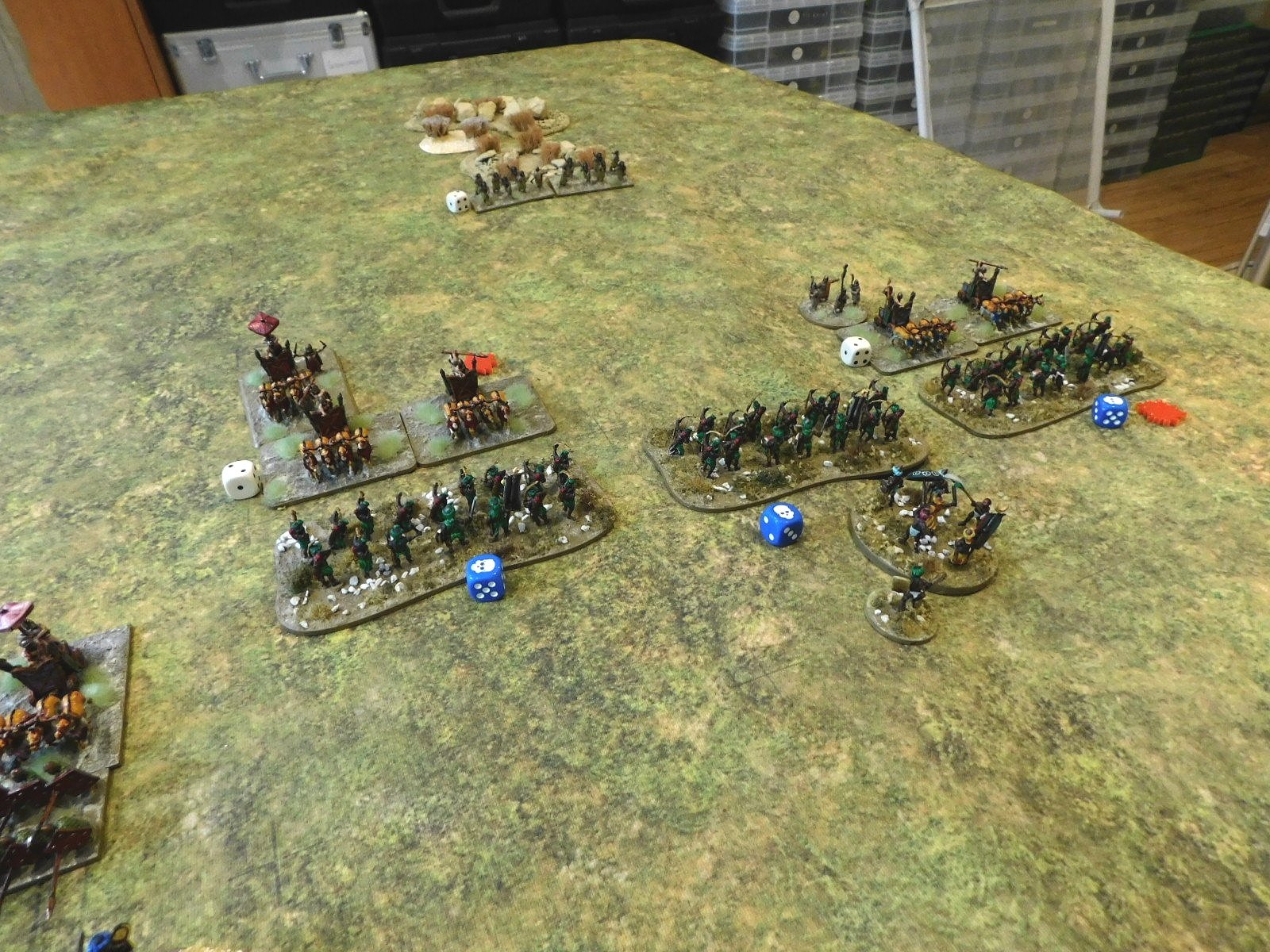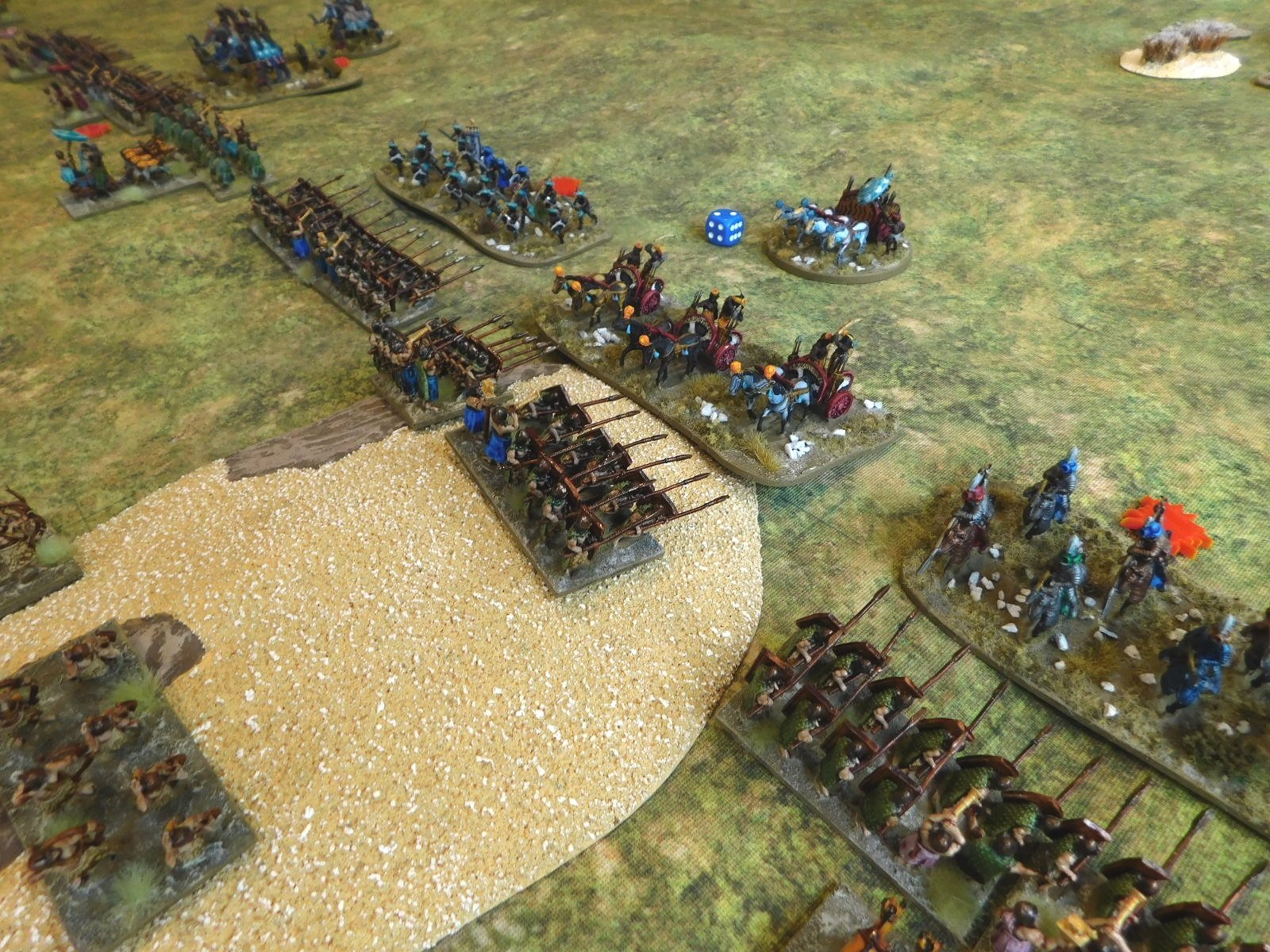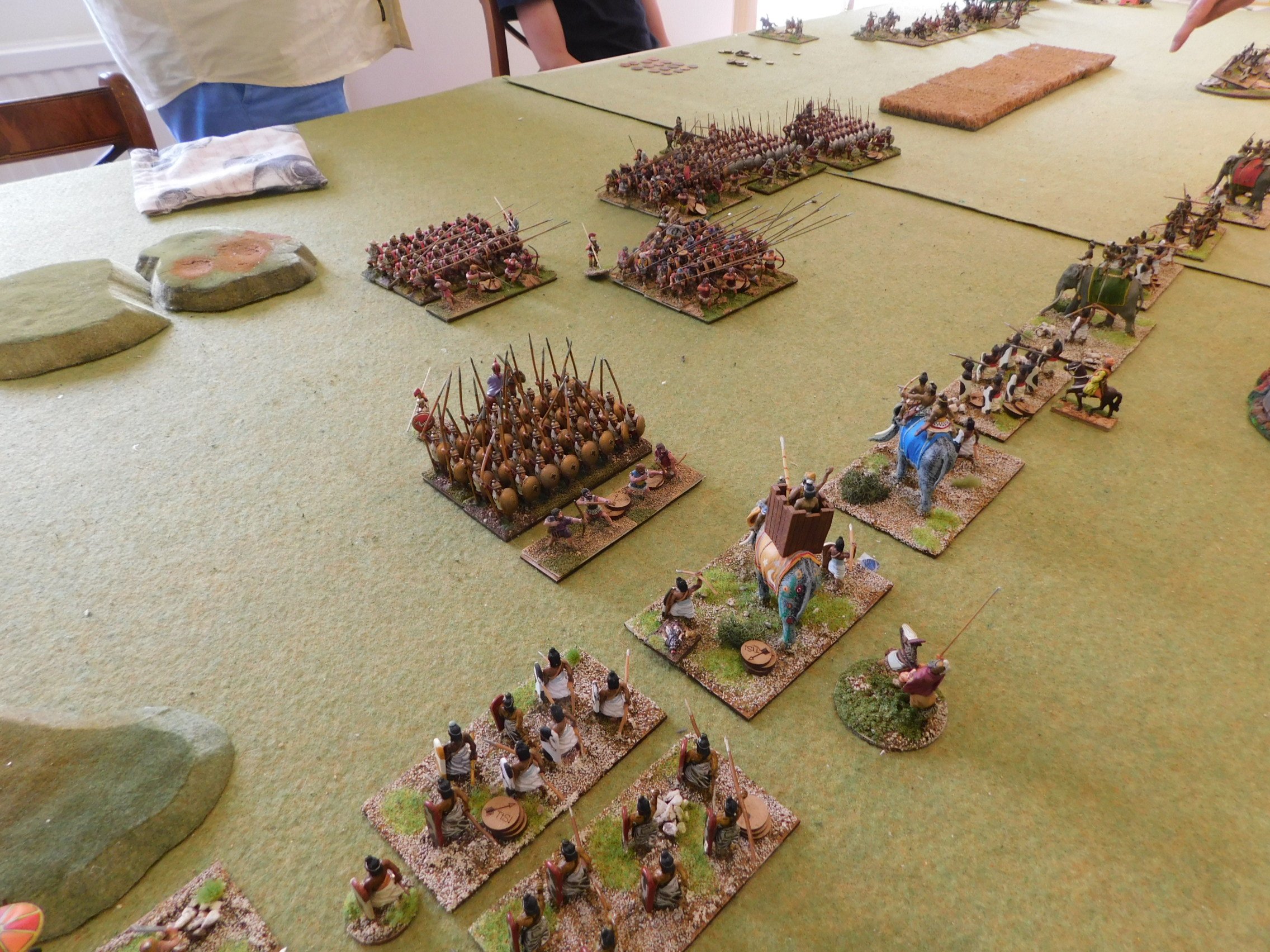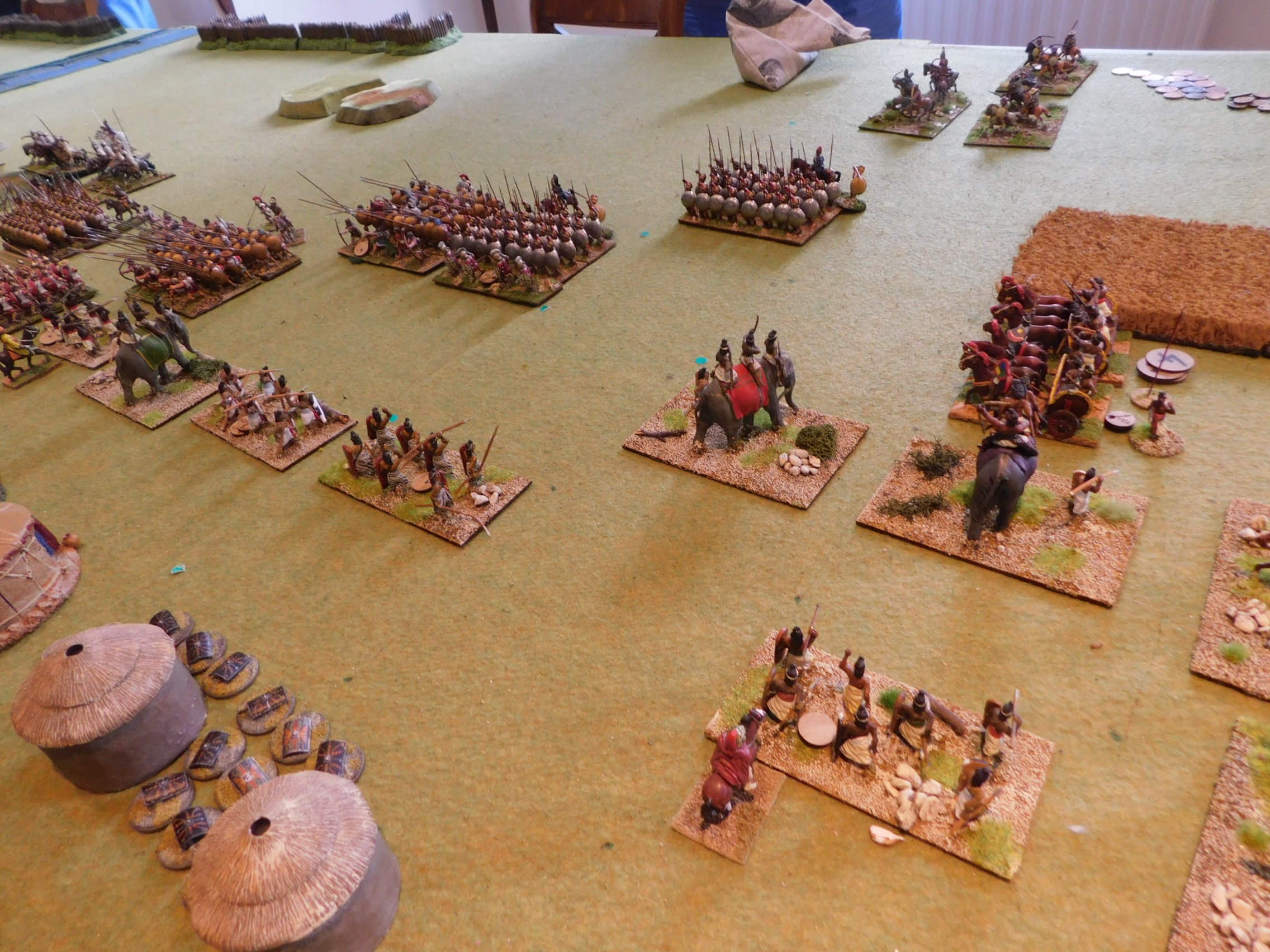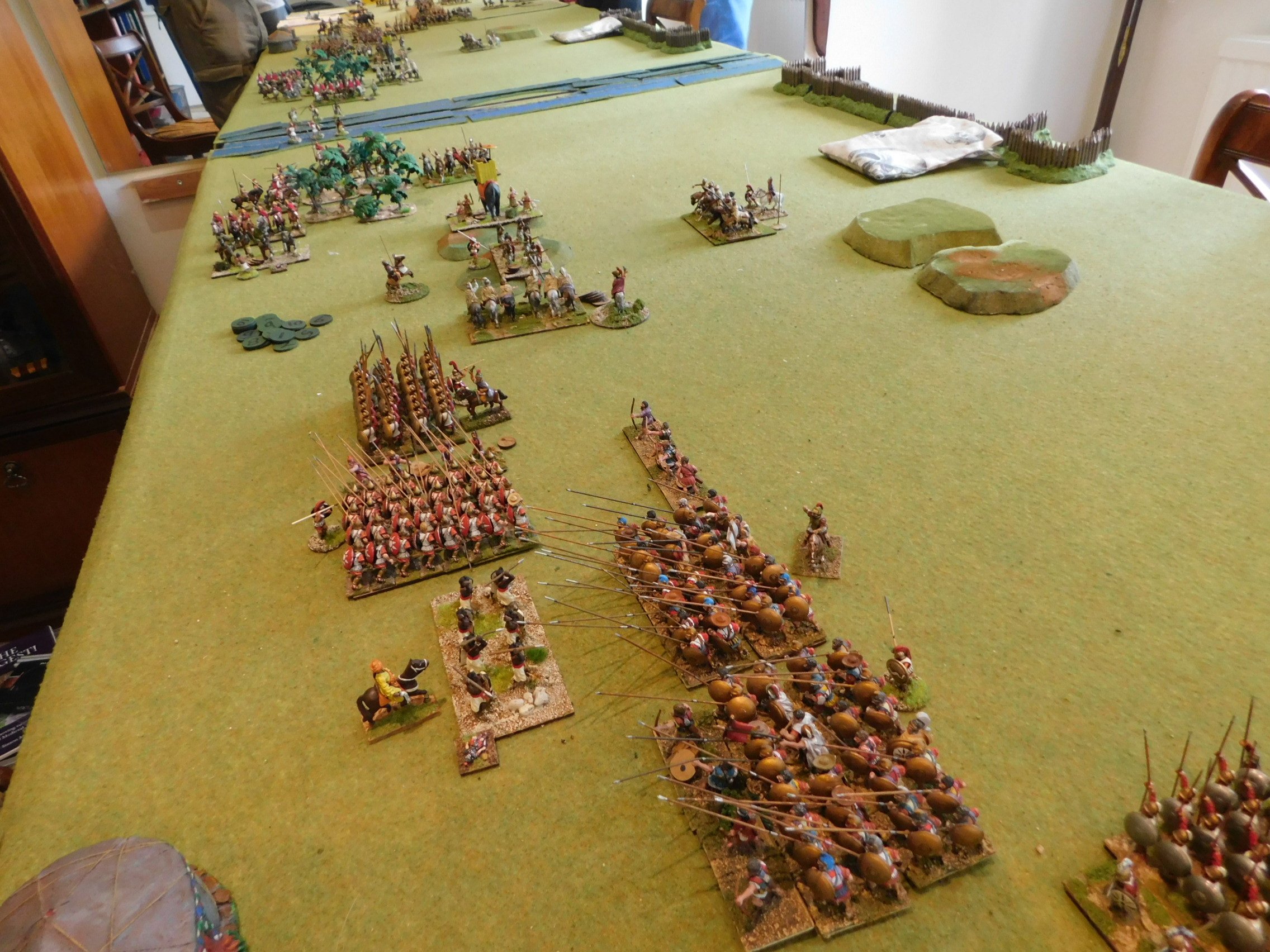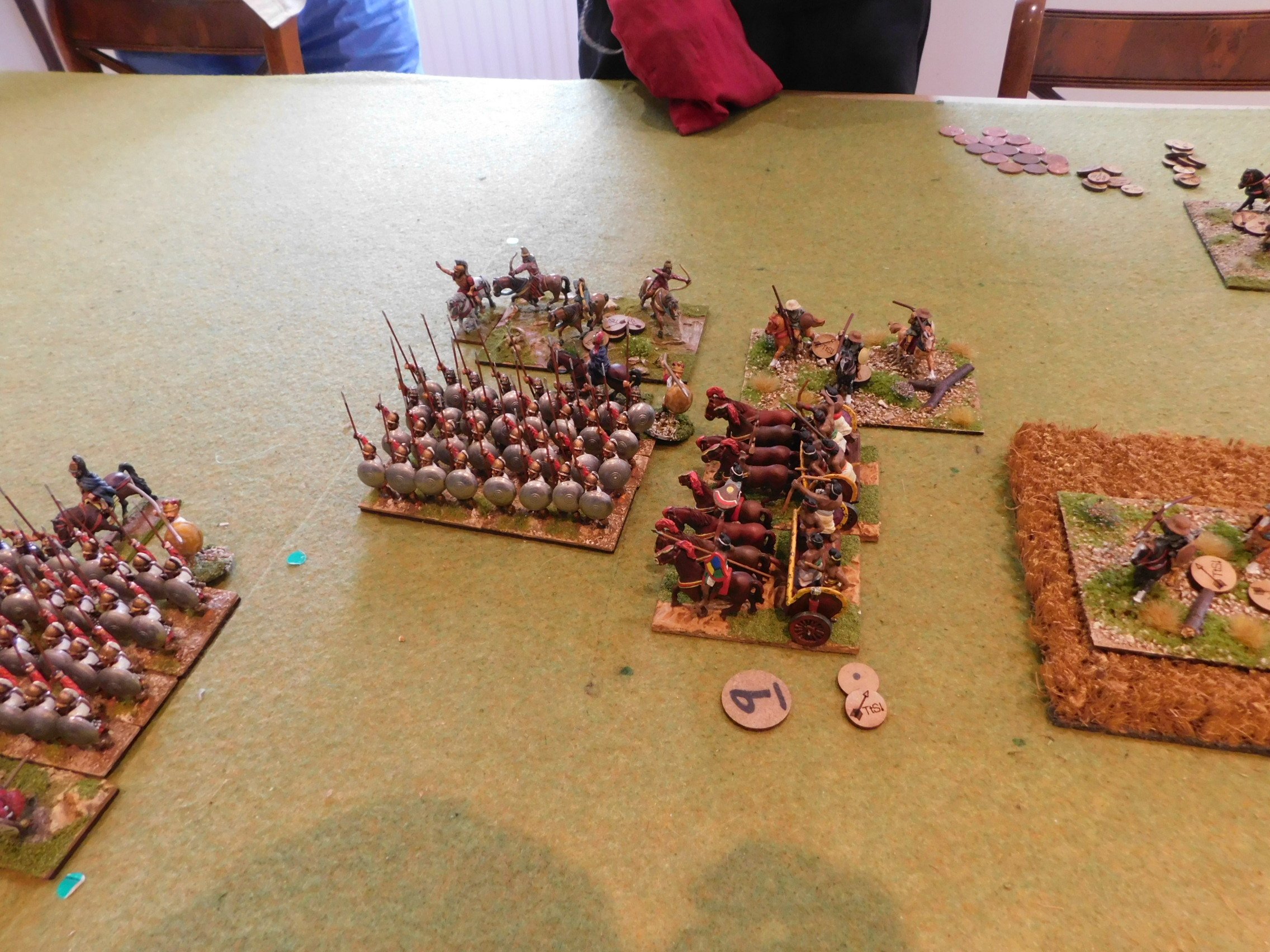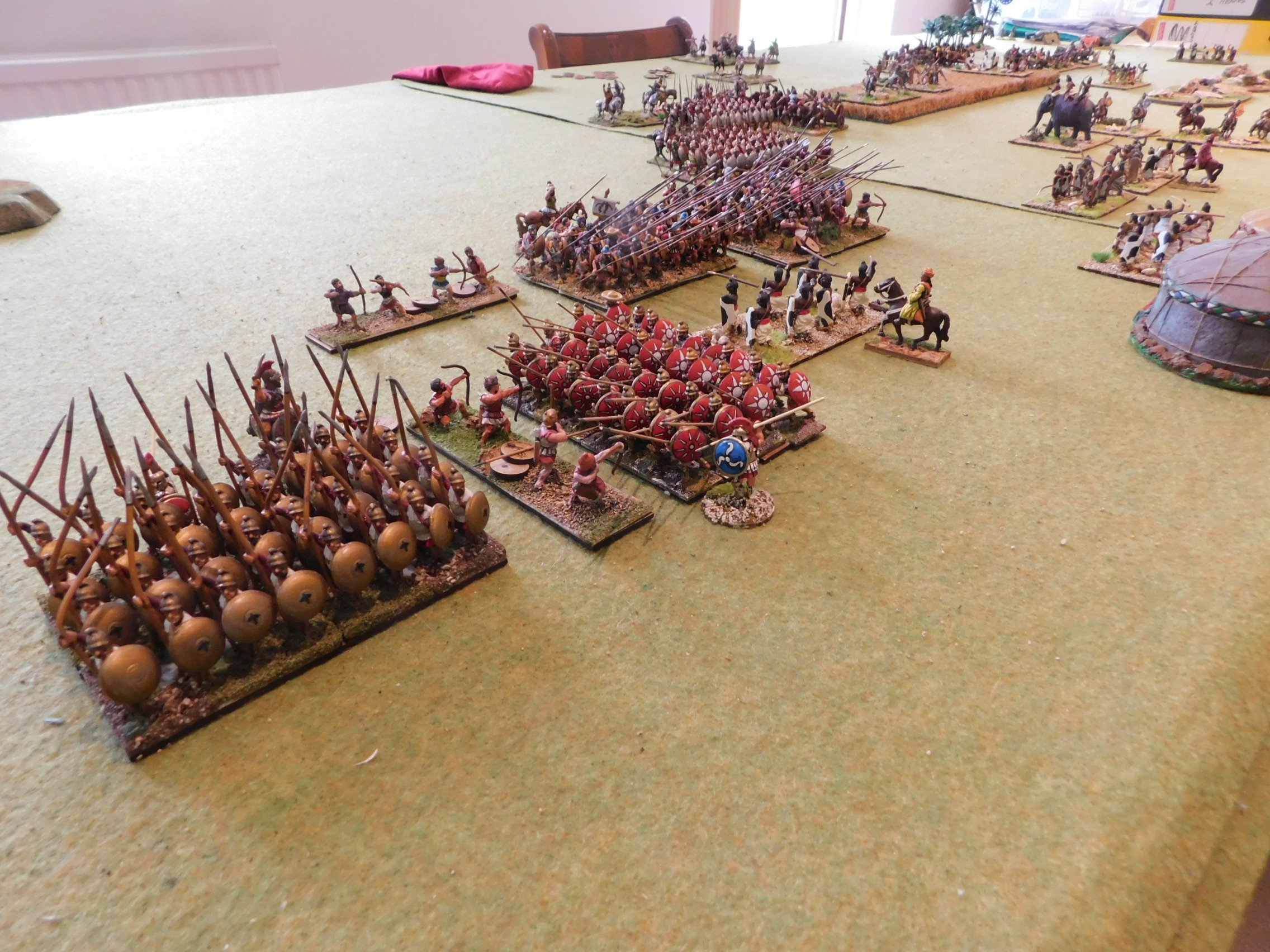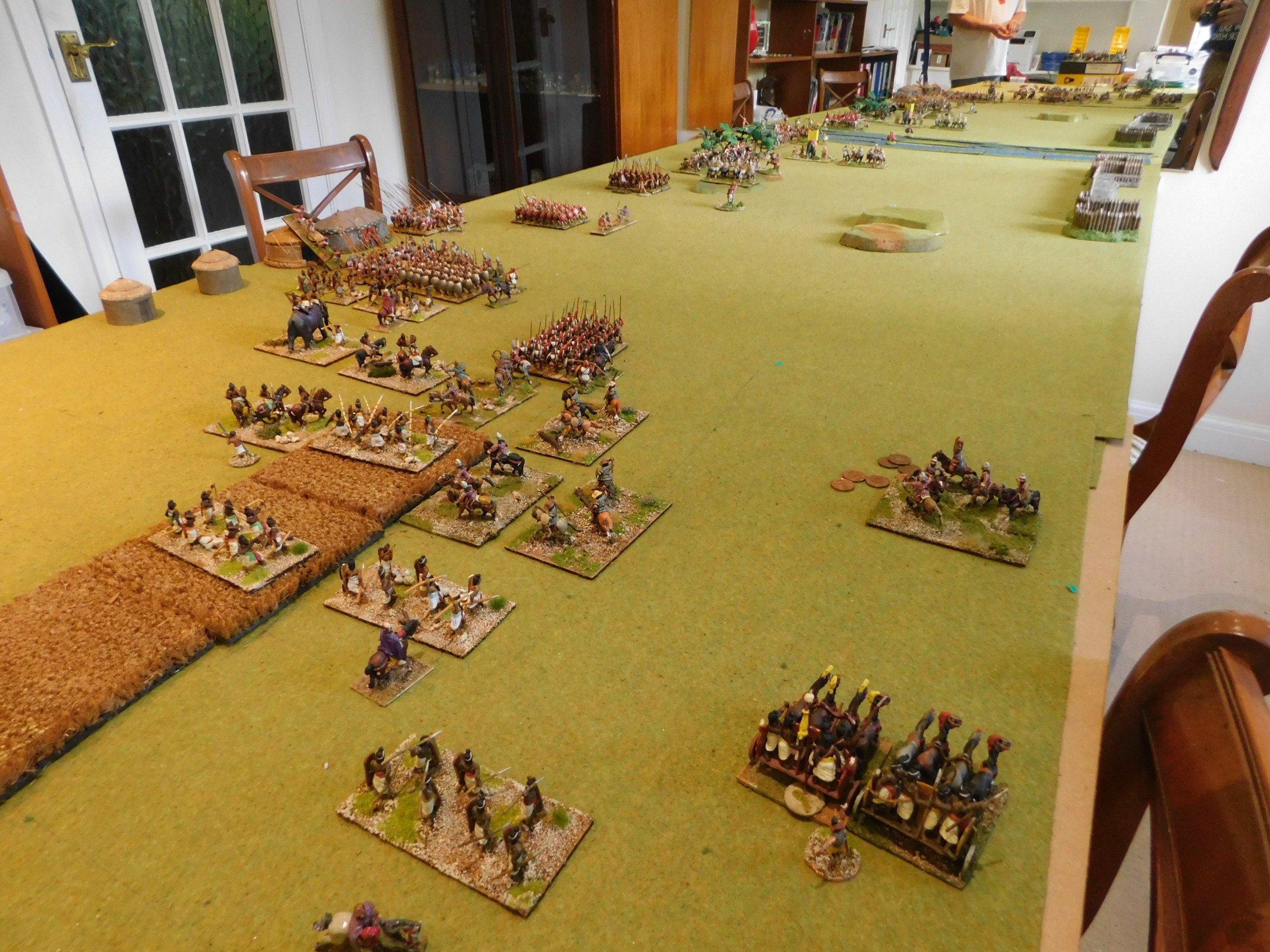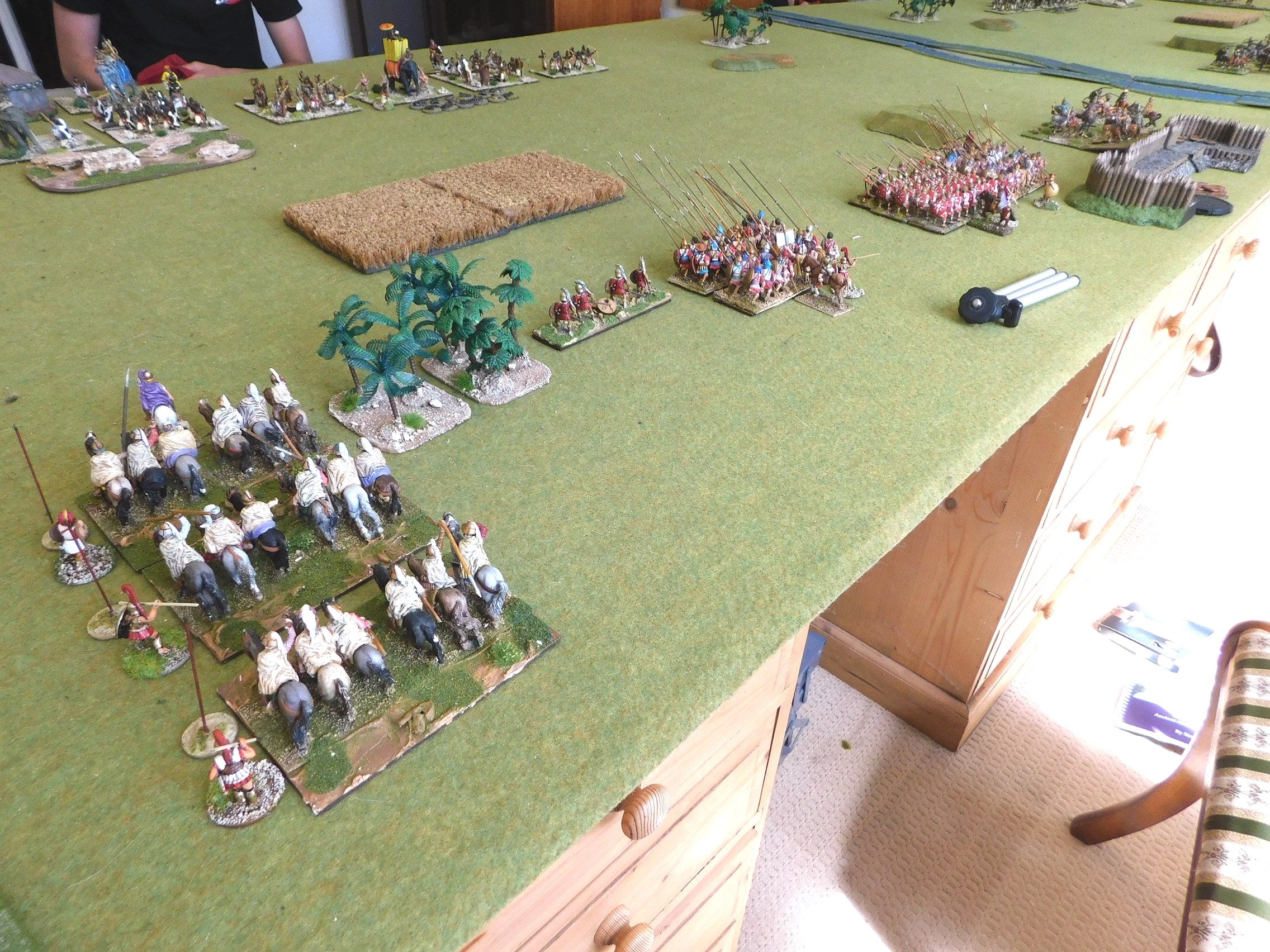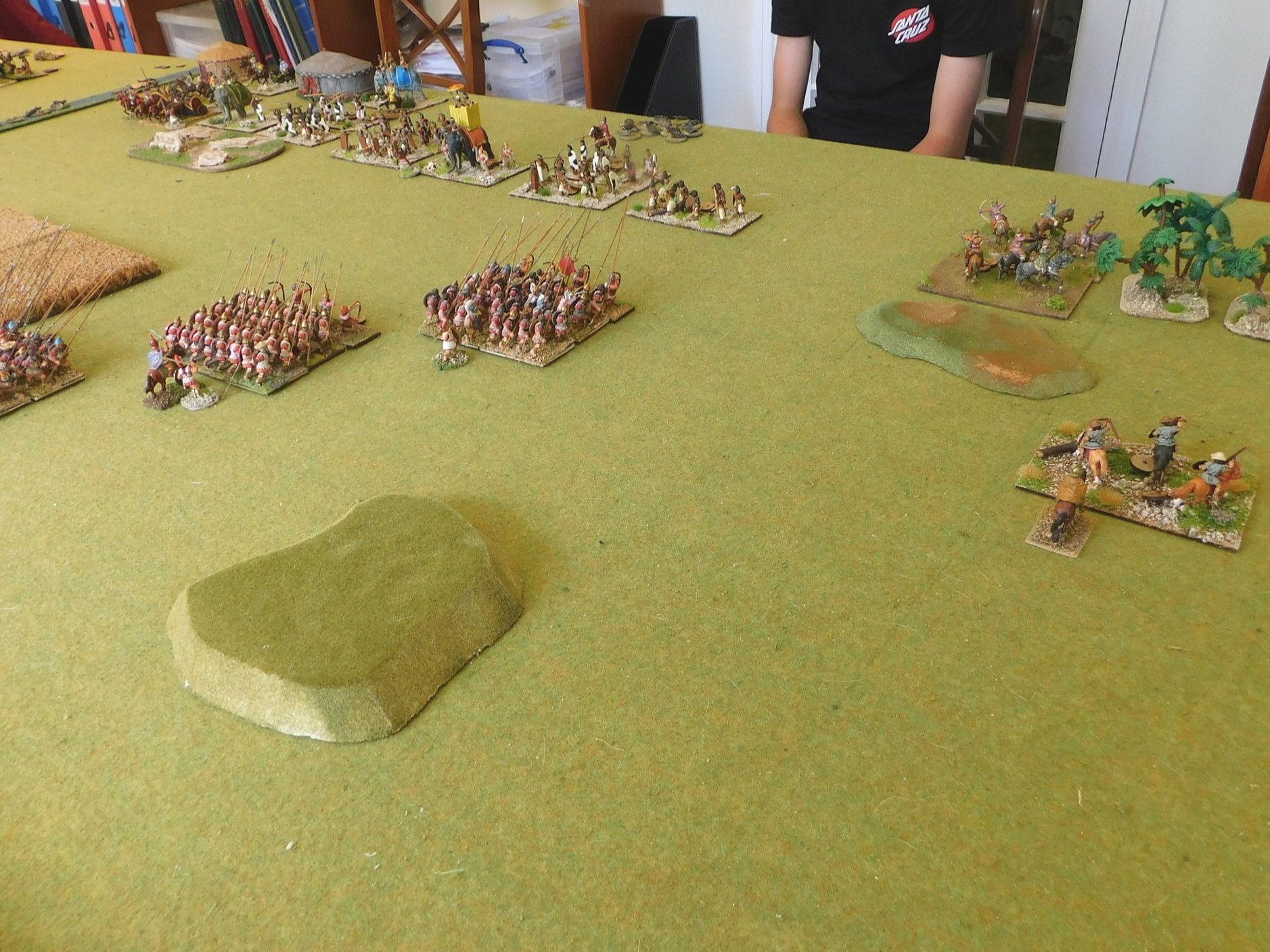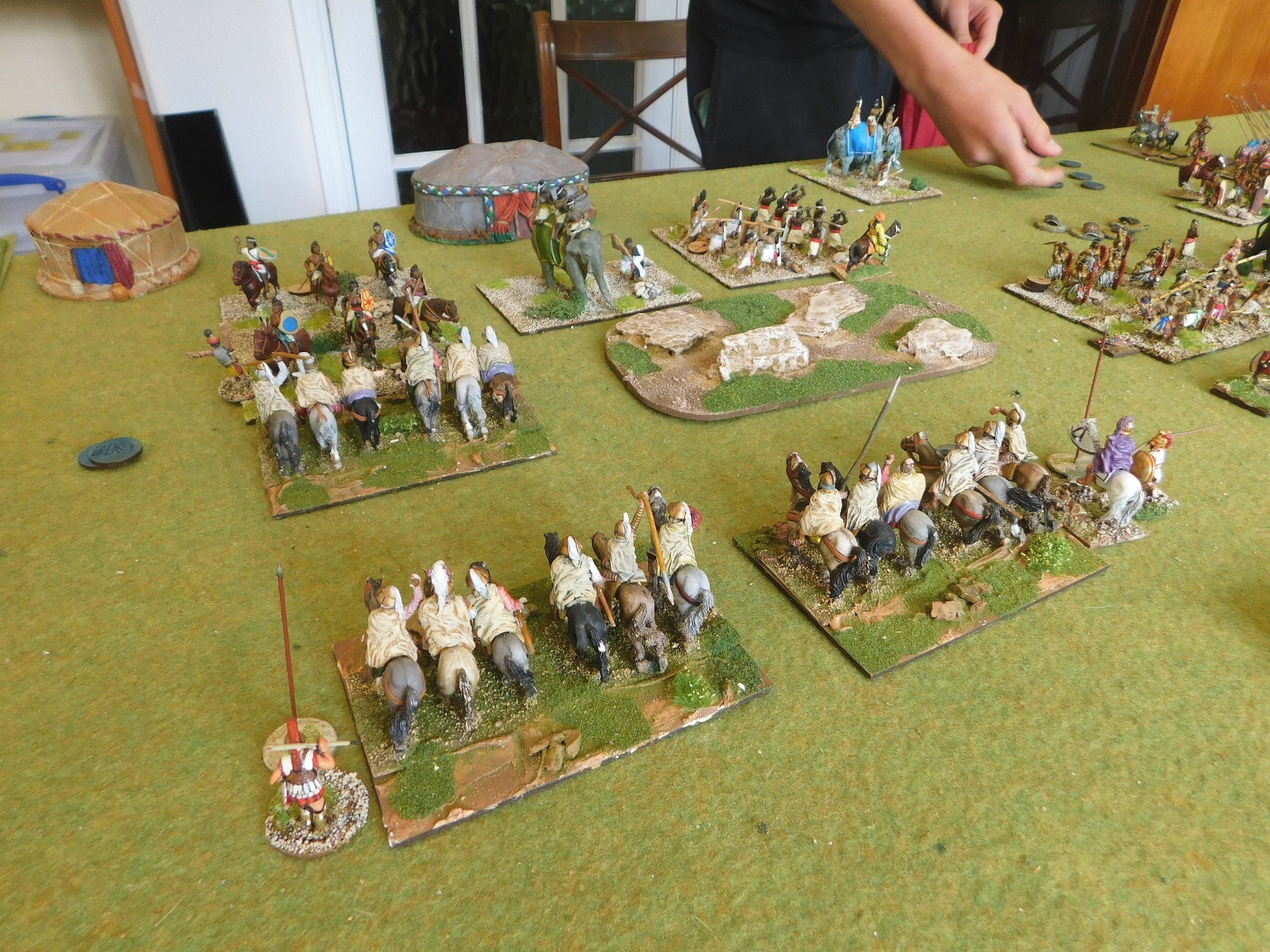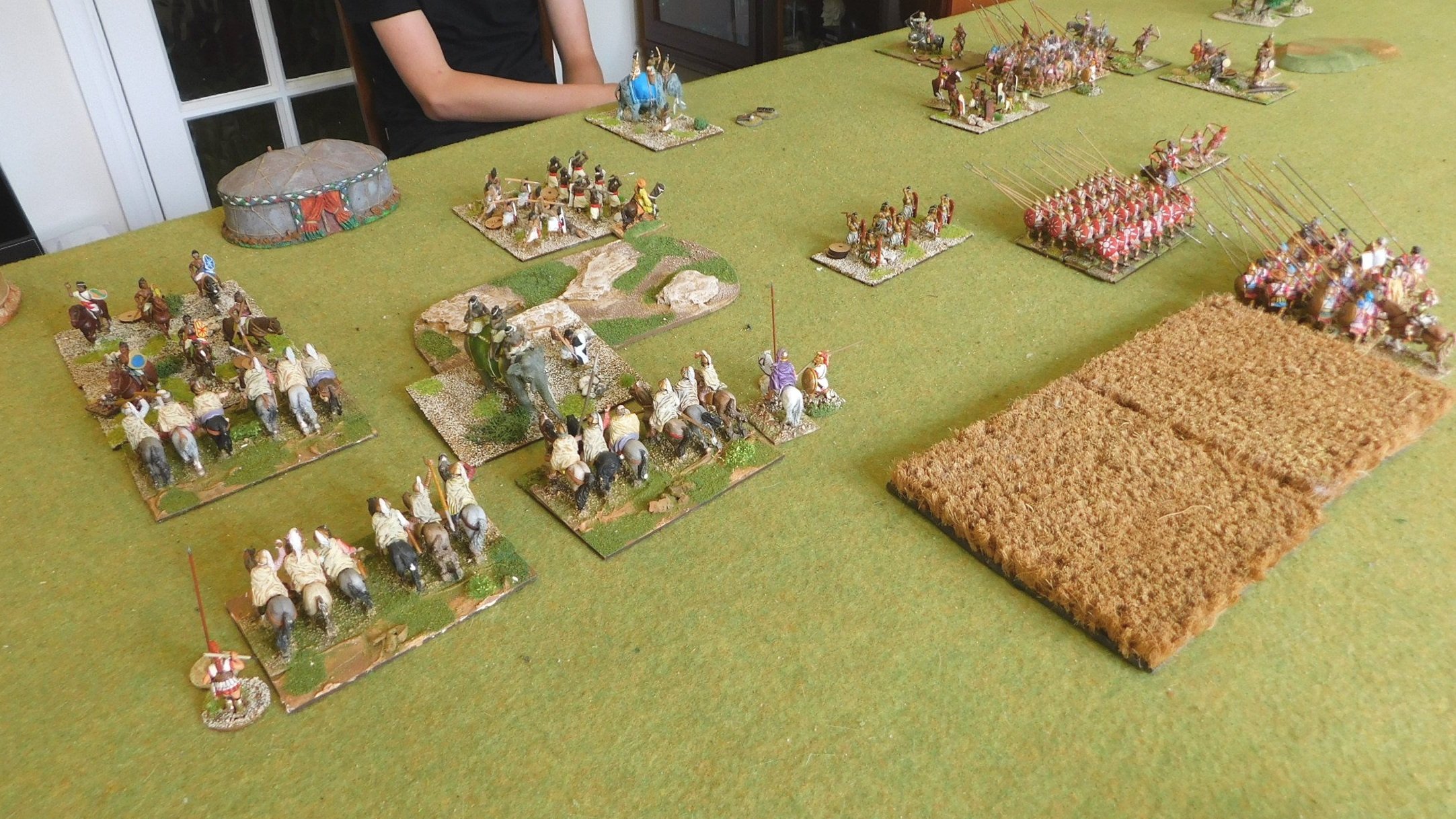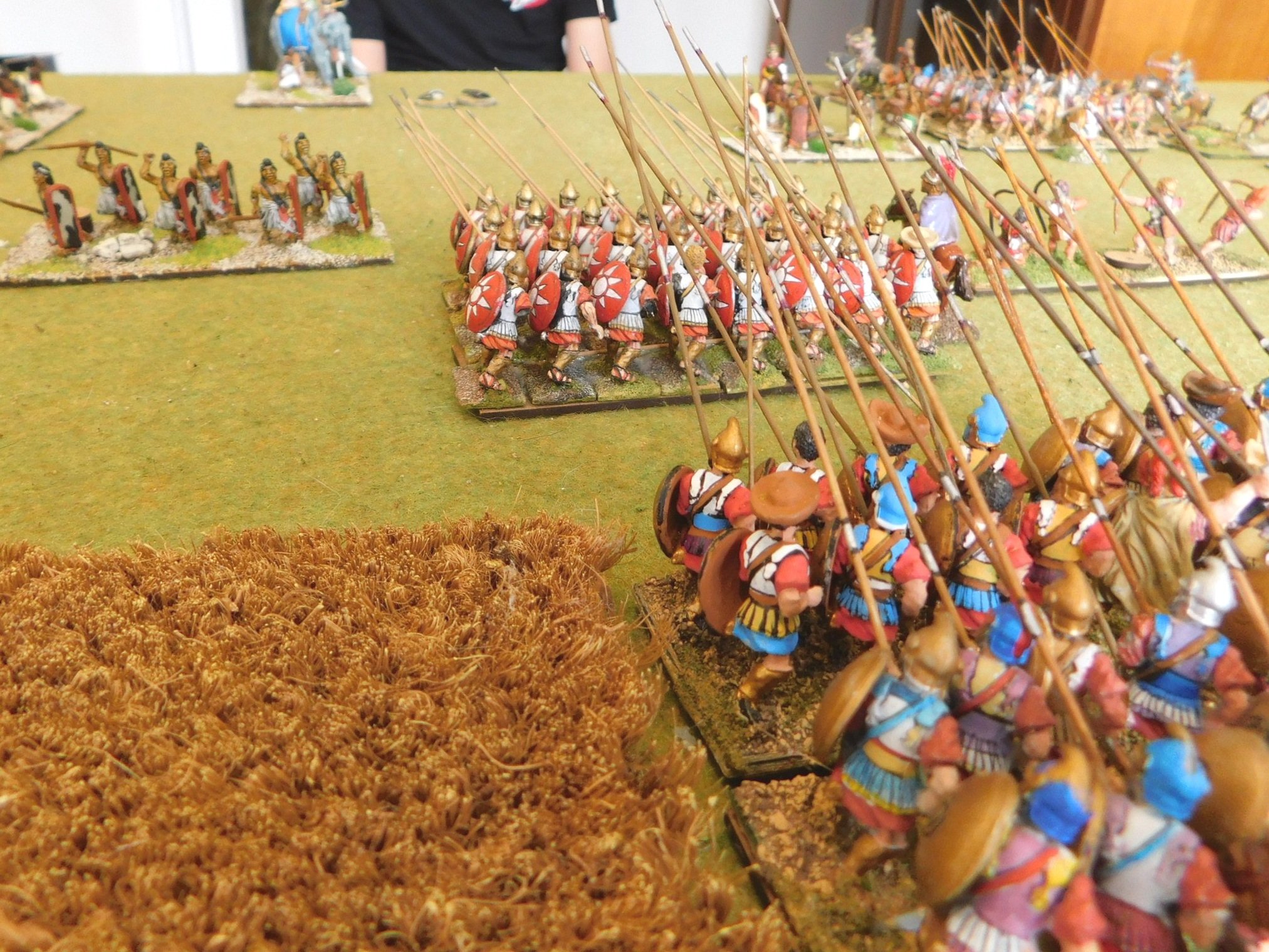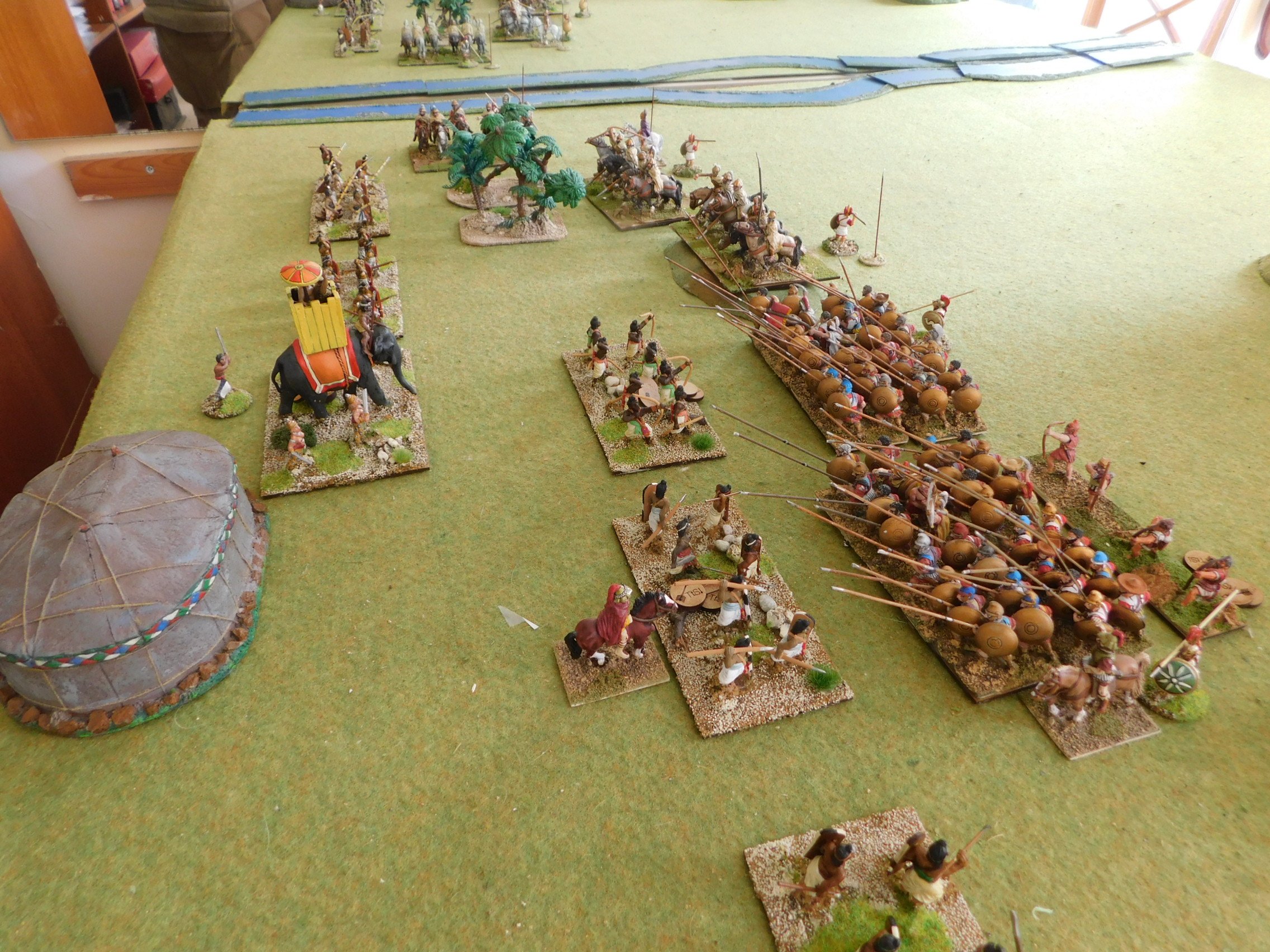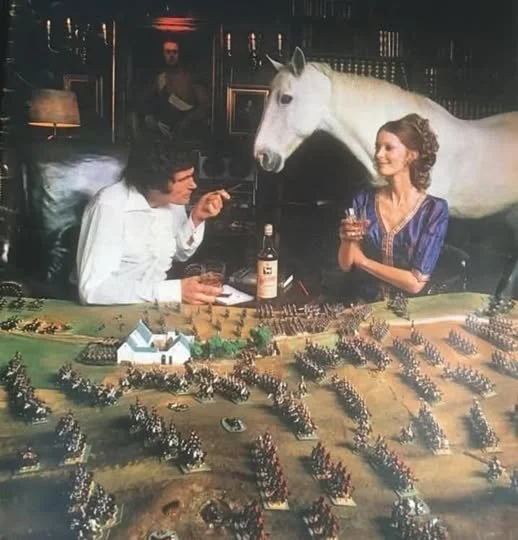TTS AAR: Classical Indians vs Hittites
/Time to get a couple of my favourite 15mm armies onto the tabletop: I would play the Classicial Indians versus Rob playing the Hittites.
During deployment, I had weighted my left flank: the plan being to win a quick victory there and then swing around and take his centre from the rear.
Unfortunately, although I did eventually get a win on the left, it was by no means the ‘quick victory’ I wanted.
This meant that my weaker right flank came under huge amounts of pressure, starting with the Hittites’ ally-Syrian Light Chariots dancing around my flank to threaten my camps and rear.
Rob’s clever use of a Someone had Blundered stratagem in the right-centre also meant my elephants there failed to intervene.
In the end, I had to consolidate my right-centre position and hope that the troops out on the right would survive without support.
Paricularly vulnerable were the javelinmen on the hill on the far right of the field, who were beign assaulted from the flank and rear by those pesky Syrians but, unbelievably, the javelinmen were made of stern stuff and just simply refused to die!
The Hittites, well aware that they were losing on the left, slammed everything they had left at my centre and right, but the Indian elephants proved very difficult for the Hittite chariots to kill (+2 defensive bonus for elephants fighting mounted meant my veteran Nellies were saving on a 4+) and those Indian javelinmen on the hill were still refusing to die!
As my left flank force polished off their opponents and began to arrive back in the centre, the Hittites tried one last assault on my troops there, but this proved their undoing: I was ahead on victory medals, so even a one-for-one result to any melees would give me the victory.
In the end, and very appropriately, it was the elephants in the centre that finally broke the last Hittite unit that I needed to rout for the victory: a glorious win for the Indians.
It had been an interesting game. I thought that my chariots and elephants on the left would easily beat the Hittite chariots and infantry there, but although I eventually ended up ahead there, it had been a hard slog and left the rest of my troops to fend for themselves.
The Syrian light chariots proved difficult to contain: a little more luck coming Rob’s way and I would have lost a camp and a couple of units to their depradations, but fortune smiled on me and the resolute javelinmen on the hill gave me the time to adjust my positions to counter their attack.
In the end it was the staying power of the elephants (especially versus mounted opponents) that won me the day, but it had certainly been a close run thing!


















































